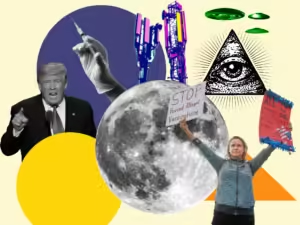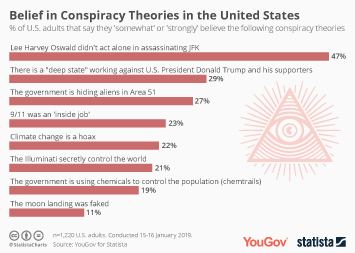
In the digital age, conspiracy theories proliferate faster than ever, fueled by social media, online forums, and a general skepticism towards authority. As we move through 2024, it’s essential to separate fact from fiction when exploring the most prominent government conspiracy theories. This article aims to dissect some of these theories, analyze their credibility, and provide readers with a clearer perspective on what might be real and what is pure fiction.
What Are Government Conspiracy Theories?
Government conspiracy theories are claims suggesting that certain governmental actions or policies are deliberately hidden or misrepresented from the public. These theories often stem from mistrust, fear, or dissatisfaction with governmental transparency and accountability. While some theories may have a basis in truth, many are exaggerated or entirely unfounded.
The Rise of Conspiracy Theories in 2024
The year 2024 has seen a surge in various conspiracy theories, partly due to the growing divide between the public and their governments. Technological advancements have also played a role, with the spread of misinformation being easier and faster. Let’s delve into some of the top conspiracy theories circulating this year.
1. The Secret Space Force: Hidden Agendas Beyond Earth
Theory: A popular theory suggests that the U.S. Space Force, established to protect American interests in space, has a hidden agenda. Some believe it’s involved in secret extraterrestrial dealings or even in developing advanced weapons that could impact global geopolitics.
Fact vs. Fiction: While the Space Force’s mission includes defending against potential space-based threats and ensuring space dominance, there is no concrete evidence supporting claims of secret extraterrestrial interactions or weapon development. Government officials have publicly stated that the Space Force’s operations are focused on national security and space exploration.
2. 5G and Government Surveillance: A New Era of Control
Theory: Another prevalent conspiracy theory is that 5G technology is being used by governments to enhance surveillance capabilities and control populations. Proponents argue that the increased connectivity provided by 5G could be exploited for mass data collection and invasive monitoring.
Fact vs. Fiction: The scientific consensus is that 5G technology, while indeed improving internet speeds and connectivity, does not inherently increase surveillance capabilities. Governments and tech companies adhere to data protection regulations, although concerns about privacy are valid and warrant ongoing scrutiny.
3. The Pandemic and Global Control: A Manipulated Crisis
Theory: Some theories posit that the COVID-19 pandemic was orchestrated or exaggerated by governments to implement global control measures. Claims include using the pandemic as a pretext for authoritarian policies or as a means to introduce mandatory vaccinations and digital IDs.
Fact vs. Fiction: The pandemic was a genuine global health crisis, as confirmed by the World Health Organization and other health experts. Governments worldwide implemented various measures to curb the spread of the virus, and while some policies have been contentious, the evidence does not support claims of a deliberate global control agenda.
4. Climate Change and Geoengineering: Government Experiments
Theory: There is speculation that governments are secretly engaged in geoengineering experiments to combat or control climate change. Some believe that weather manipulation technologies are being used to create artificial weather patterns or to affect global climate.
Fact vs. Fiction: While geoengineering is a field of research aimed at combating climate change, such as carbon capture and solar radiation management, there is no credible evidence that governments are using these technologies for secretive or harmful purposes. The scientific community debates the feasibility and ethics of geoengineering, but transparency and oversight are emphasized in research.
5. Digital Currencies and Economic Control: A New World Order
Theory: The rise of digital currencies, particularly central bank digital currencies (CBDCs), has led to theories that governments are using these systems to exert unprecedented control over the economy and individual financial transactions.
Fact vs. Fiction: CBDCs are being explored by many countries as a way to modernize financial systems and enhance transaction efficiency. While concerns about privacy and financial control are valid, there is no evidence that these currencies are part of a larger conspiracy for economic dominance.
How to Evaluate Conspiracy Theories
When evaluating conspiracy theories, consider the following tips:
- Source Credibility: Verify the reliability of sources spreading the theory. Reputable news organizations and academic research should be prioritized.
- Evidence: Look for concrete evidence supporting or refuting the claims. Anecdotes and speculative arguments are less reliable.
- Expert Opinions: Consult experts and professionals in relevant fields to gain a more informed perspective.
- Critical Thinking: Analyze the theory’s logical consistency and consider alternative explanations.
Conclusion
As we navigate through 2024, it’s crucial to approach government conspiracy theories with a critical eye. While skepticism towards authority is natural and healthy, it’s important to differentiate between plausible concerns and unfounded speculation. By focusing on credible sources and evidence, we can better understand the truth behind these theories and contribute to a more informed public discourse.


